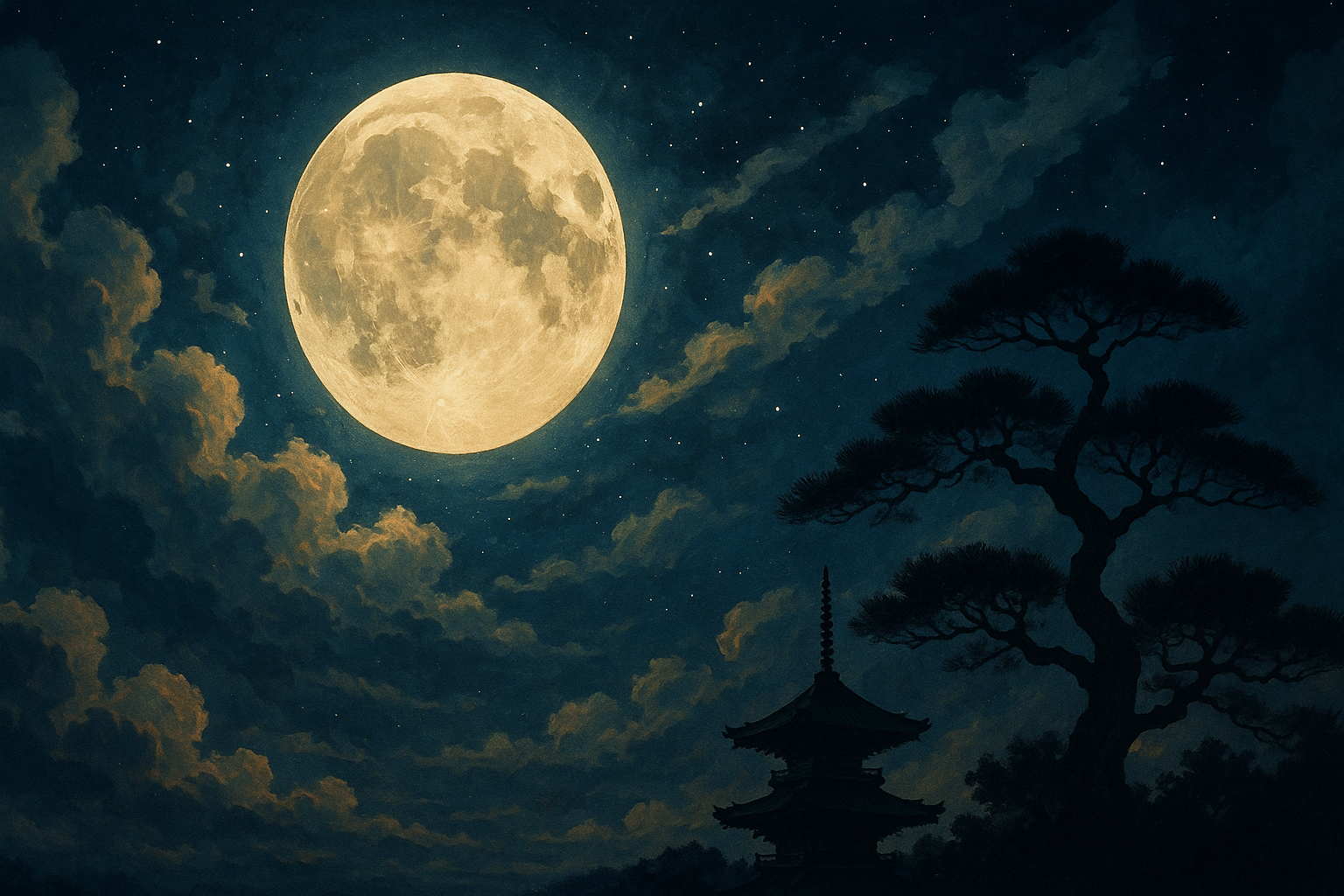🌕 A Subtle Confession Beneath the Moonlight – “The moon is beautiful, isn’t it?”
💬 Sakura and Tom in the Park at Night
Sakura: The moon is beautiful, isn’t it?
Tom: Yeah… it really is.
Sakura: (smiling) That’s all I needed to say tonight.
🌸 English Insight
This isn’t just a compliment about the night sky. In Japanese literature, especially in the story surrounding Natsume Sōseki, “The moon is beautiful, isn’t it?” is a poetic substitute for “I love you.” It’s about unspoken connection, quiet respect, and shared stillness. The moon acts as a mirror—what is seen in it reflects the heart.
🌙 にほんごせつめい(ひらがな)
この ひょうげん は、 にほん の ぶんがく に ふかく ねづいた ロマンチック な ことば です。
「つきが きれい ですね」 は、 ただ の てんき の はなし では なく、 こころ の なか の 「すき」 を ひとこと に こめた もの。
ちょくせつ いわず に、 しずか に、 でも つたわる。 それ が、 にほんご の うつくしさ です。
💖 Deep Feeling in Anime – “I’ve always wanted to see you.”
Character Line (in a heartfelt scene):
“I’ve always wanted to see you.”
💬 English Insight
Used in anime and dramas, this line reveals longing over time. The word “always” (ずっと) expresses persistence—waiting, remembering, hoping. Unlike dramatic Western confessions, Japanese emotions often bloom slowly. This phrase captures quiet endurance in love.
にほんごせつめい(ひらがな)
「ずっと あいたかった」 は、 じかん を こえて つづく おもい を あらわす ことば です。
アニメ や ドラマ で しばしば ききます が、 ただ の あいさつ では なく、 ながく こころ に だきつづけた きもち を つたえます。
「ずっと」 という ことば に、 かなしみ や、 ねがい が しずか に こもって います。
📘 Grammar Column: Using “て形” (Te-form) to Connect Actions
🌍 English Insight
The “te-form” is a connector. It links verbs to show sequence, cause, or requests. Instead of listing actions separately, Japanese prefers fluid transitions. Like brush strokes in a painting, the “te-form” paints one action leading gently to the next.
Example:
- “I ate dinner and watched a movie.” →
Japanese: ばんごはん を たべて、 えいが を みました。
📖 にほんごせつめい(ひらがな)
「~て」けい は、 どうさ を むすぶ けいしき です。
「たべて、ねて、あるいて」など、 つぎつぎ に おこる こと を、 なめらか に つたえられます。
ひとつ の せん に つながる よう に、 にほんご では、 ぶんしょう も 「て」けい で ながれ を つくる の が しぜん です。
✨ Why These Expressions Are Truly Unique
Japanese doesn’t always shout—it whispers.
It reveals love with a skyward glance, connects actions like waves on the shore, and lets silence say more than words ever could.
にほんごせつめい
にほんご は、 つよい ことば より、 しずけさ に よりそう ことば が おおい の です。
「つきが きれい」 な ひとこと に、 あい を。
「て」けい の ながれ に、 じかん の りれき を。
この うつくしさ が、 せかい に ひとつ だけ の にほんご の ちから です。
📩 A Message from the Author
Language is not just grammar—it’s a bridge.
Between hearts, between cultures, between you and the version of yourself that dreams in a new tongue.
Maybe today, you whispered tsuki ga kirei and smiled.
Maybe tomorrow, you’ll write your own moonlit phrase.
Keep chasing words like fireflies.
They might flicker. They might fly away.
But if you follow their glow, you’ll find not only a new language—
you’ll find a new you.
にほんごせつめい(ひらがな)
ことば は、 ただ の ぶんぽう では ありません。
こころ と こころ を むすぶ、 ひと と じぶん を つなぐ、 まほう の はし です。
きょう、「つきが きれい」 と いって みたら、
あした は じぶん の ことば で、 なにか を つたえたく なる かも しれません。
ことば を、 ほたる の よう に おいかけて ください。
ゆれて、 とんで、 とどかない こと も ある けれど、
その ひかり を おいかける あなた に、
あたらしい じぶん が まっています。




コメント